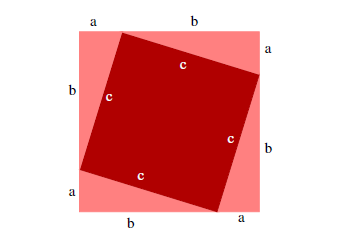Proof 1

c2 = Area(red square) = (a + b)2 - 4 * (ab / 2)
c2 = a2 + 2ab + b2 - 2ab
c2 = a2 + b2
Proof 2

The total area of white does not change as the coloured triangles move within the large square, so the large white area equals the total of the two smaller ones. The three areas are quadrilaterals, with the correct length of sides and the two smaller ones have a right angle, and the figure with the large white area is symmetric under a right angle rotation, so it too is a square.